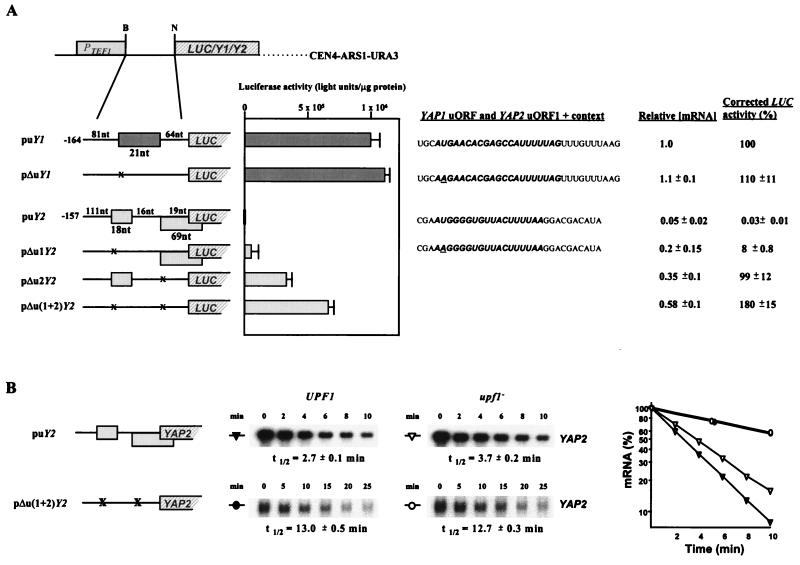FIG. 13.
The S. cerevisiae mRNAs YAP1 and YAP2 have different types of uORF, which affect translation and mRNA stability in distinct ways. (A) Elimination of the respective uORFs via mutation of the start codons (AUG→AAG; crosses in the construct maps) reveals striking differences which are most readily detected by using a reporter gene (in this case LUC, encoding luciferase. Removal of the uORF from the natural YAP1 leader (puY1) has little effect on translation or mRNA stability (pΔuY1). The YAP2 uORFs, in contrast, have been found to influence translation and mRNA stability (here reflected in changed steady-state mRNA levels). Both translation and relative mRNA levels were increased upon removing either YAP2 uORF1 (pΔu1Y2) or YAP2 uORF2 (pΔu2Y2) or both uORFs [pΔu(1+2)Y2] from the 5′UTR. The wild-type and mutant sequences of the YAP1 uORF and YAP2 uORF1 are indicated. (B) Mechanism by which the YAP2 uORFs affect mRNA decay. The Northern blots show the disappearance of the YAP2 mRNA signal as a consequence of inactivating the PolII promoter in a heat-sensitive rpb1 mutant. The destabilization effect is largely UPF1 independent. Reproduced from reference 572 with permission of the publisher.

